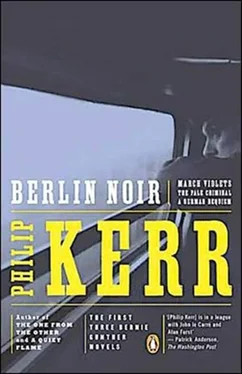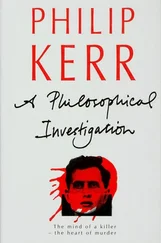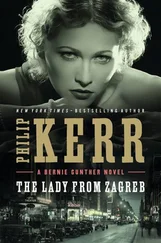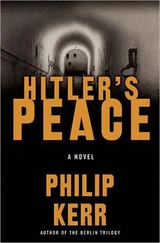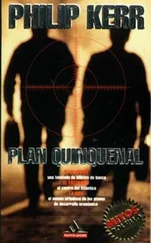There were two other people in attendance at my invitation, which compounded the atmosphere of distrust. One of these, a woman, was a forensic psychiatrist from the Berlin Charité Hospital. Frau Marie Kalau vom Hofe was a friend of Arthur Nebe, himself something of a criminologist, and attached officially to police headquarters as a consultant in matters of criminal psychology. The other guest was Hans Illmann, Professor of Forensic Medicine at the Friedrich Wilhelm University in Berlin, and formerly senior pathologist at the Alex until his cool hostility to Nazism had obliged Nebe to retire him. Even by Nebe’s own admission, Illmann was better than any of the pathologists currently working at the Alex, and so at my request he had been invited to take charge of the forensic medical aspects of the case.
A spy, a woman and a political dissident. It needed only the stenographer to stand and sing ‘The Red Flag’ for my new colleagues to believe that they were the subject of a practical joke.
Nebe finished his long-winded introduction of me and the meeting was in my hands.
I shook my head. ‘I hate bureaucracy,’ I said. ‘I loathe it. But what is required here is a bureaucracy of information. What is relevant will become clear later on. Information is the lifeblood of any criminal investigation, and if that information is contaminated then you poison the whole investigative body. I don’t mind if a man’s wrong about something. In this game we’re nearly always wrong until we’re right. But if I find a member of my team knowingly submitting wrong information, it won’t be a matter for a disciplinary tribunal. I’ll kill him. That’s information you can depend on.
‘I’d also like to say this. I don’t care who did it. Jew, nigger, pansy, stormtrooper, Hitler Youth Leader, civil servant, motorway construction worker, it’s all the same to me. Just as long as he did do it. Which leads me to the subject of Josef Kahn. In case any of you have forgotten, he’s the Jew who confessed to the murders of Brigitte Hartmann, Christiana Schulz, and Zarah Lischka. Currently he’s a Paragraph Fifty-one in the municipal lunatic asylum at Herzeberge, and one of the purposes of this meeting is to evaluate that confession in the light of the fourth murdered girl, Lotte Winter.
‘At this point let me introduce you to Professor Hans Illmann, who has kindly agreed to act as the pathologist in this case. For those of you who don’t know him, he’s one of the best pathologists in the country, so we’re very fortunate to have him working with us.’
Illmann nodded by way of acknowledgement, and carried on with his perfect roll-up. He was a slight man with thin, dark hair, rimless glasses and a small chin beard. He finished licking the paper and poked the roll-up into his mouth, as good as any machine-made cigarette. I marvelled quietly. Medical brilliance counted for nothing beside this kind of subtle dexterity.
‘Professor Illmann will take us through his findings after Kriminalassistant Korsch has read the relevant case note.’ I nodded at the dark, stocky young man sitting opposite me. There was something artificial about his face, as if it had been made up for him by one of the police artists from Sipo Technical Services, with three definite features and very little else: eyebrows joined in the middle and perched on his overhanging brows like a falcon preparing for flight; a wizard’s long, crafty chin; and a small, Fairbanks-style moustache. Korsch cleared his throat and began speaking in a voice that was an octave higher than I was expecting.
‘Brigitte Hartmann,’ he read. ‘Aged fifteen, of German parents. Disappeared 23 May 1938. Body found in a potato sack on an allotment in Siesdorf, 10 June. She lived with her parents on the Britz Housing Estate, south of Neukölln, and had walked from her home to catch the U-Bahn at Parchimerallee. She was going to visit her aunt in Reinickdorf. The aunt was supposed to meet her at Holzhauser Strasse station, only Brigitte never arrived. The station master at Parchimer didn’t remember her getting on the train, but said that he’d had a night on the beer and probably wouldn’t have remembered anyway.’ This drew a guffaw from along the table.
‘Drunken bastard,’ snorted Hans Lobbes.
‘This is one of the two girls who have since been buried,’ said Illmann quietly. ‘I don’t think there’s anything I can add to the findings of the autopsy there. You may proceed, Herr Korsch.’
‘Christiane Schulz. Aged sixteen, of German parents. Disappeared 8 June 1938. Body found 2 July, in a tramway tunnel that connects Treptower Park on the righthand bank of the Spree, with the village of Stralau on the other. Half way along the tunnel there’s a maintenance point, little more than a recessed archway. That’s where the trackman found her body, wrapped in an old tarpaulin.
‘Apparently the girl was a singer and often took part in the BdM, the League of German Girls, evening radio programme. On the night of her disappearance she had attended the Funkturm Studios on Masuren-Strasse, and sang a solo – the Hitler Youth song – at seven o’clock. The girl’s father works as an engineer at the Arado Aircraft Works in Brandenburg-Neuendorf, and was supposed to pick her up on his way home, at eight o’clock. But the car had a flat tyre and he was twenty minutes late. By the time he got to the studios Christiane was nowhere to be seen and, supposing that she had gone home on her own, he drove back to Spandau. When by 9.30 she still hadn’t arrived, and having contacted her closest friends, he called the police.’
Korsch glanced up at Illmann, and then myself. He smoothed the vain little moustache and turned to the next page in the file that lay open in front of him.
‘Zarah Lischka,’ he read. ‘Aged sixteen, of German parents. Disappeared 6 July 1938, body found 1 August, down a drain in the Tiergarten, close to the Siegessäule. The family lived in Antonstrasse, Wedding. The father works at the slaughterhouse on Landsbergerallee. The girl’s mother sent her down to some shops located on Lindowerstrasse, close to the S-Bahn station. The shopkeeper remembers serving her. She bought some cigarettes, although neither one of her parents smokes, some Blueband and a loaf of bread. Then she went to the pharmacy next door. The owner also remembers her. She bought some Schwarzkopf Extra Blonde hair colourant.’
Sixty out of every hundred German girls use it, I told myself almost automatically. It was funny the sort of junk I was remembering these days. I don’t think I could have told you much of what was really important in the world other than what was happening in the German Sudeten areas -the riots, and the nationality conferences in Prague. It remained to be seen whether or not what was happening in Czechoslovakia was the only thing that really mattered after all.
Illmann stubbed out his cigarette and began to read his findings.
‘The girl was naked, and there were signs that her feet had been bound. She had sustained two knife wounds to the throat. Nevertheless there existed strong indications that she had also been strangled, probably to silence her. It is likely that she was unconscious when the murderer cut her throat. The bruising bisected by the wounds suggests as much. And this is interesting. From the amount of blood still in her feet, and the crusted blood found inside her nose and on her hair, as well as the fact that the feet had been very tightly bound, it is my finding that the girl was hanging upside down when her throat was cut. Like a pig.’
‘Jesus,’ said Nebe.
‘From my examination of the case notes of the previous two victims, it seems highly probable that the same modus operandi was applied there too. The suggestion made by my predecessor that these girls had their throats cut while they lay flat on the ground is patently nonsense, and takes no account of the abrasions to the ankles, or the amount of blood left in the feet. Indeed, it seems nothing short of negligent.’
Читать дальше
